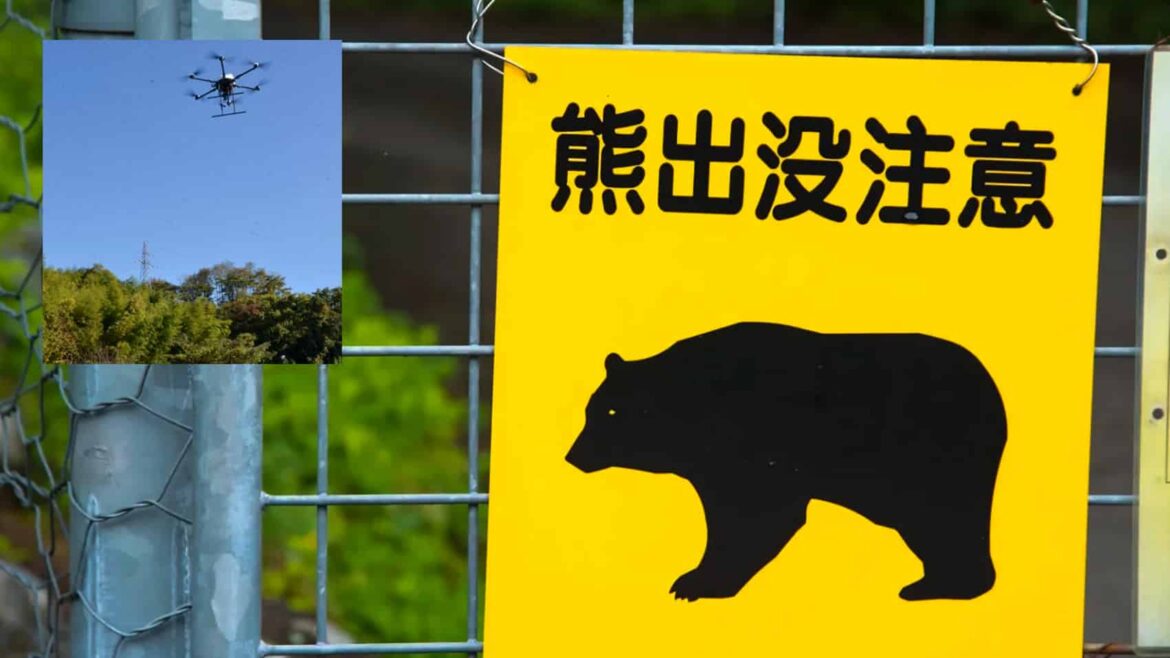In Japan’s Gifu Prefecture, drones are about to take on a new job: scaring away bears.
Starting later this month, local authorities will begin flying drones that emit dog barking sounds and small fireworks to repel bears from residential areas in Takayama, Shirakawa Village, and nearby mountain towns, as Japan Today told us.


Photo credit: Sora News 24
The move comes after a sharp rise in bear sightings and attacks across the region, which includes the UNESCO World Heritage site of Shirakawa-go, one of Japan’s most famous rural attractions.
A Growing Problem in the Mountains of Gifu
From April to October 2025, officials recorded 836 bear sightings and four injury cases across Gifu Prefecture; already surpassing last year’s totals of 674 sightings and three injuries. The latest attack happened in late October when a Spanish tourist was attacked near a shuttle bus stop to the Shirakawa observation area, not far from the picturesque thatched-roof farmhouses that attract millions of visitors every year.
According to reports, the man, in his 40s, was taking photos of the landscape around 8:30 a.m. when a small bear, likely a cub, attacked him from behind, leaving scratches on his right arm. He managed to walk to a tourist information center for help and was treated for minor injuries.


Photo credit: Wikimedia
Bear tracks were found near the scene, and traps have since been set in the area. The fact that the encounter happened near a major tourist site, not deep in the forest, alarmed local authorities and prompted calls for stronger safety measures.
Barking Drones to the Rescue
To reduce these encounters, the Gifu prefectural government will begin deploying drones later this month as part of a new wildlife deterrence program. These drones will fly over populated zones and emit loud barking noises, simulating the sound of aggressive dogs. They will also occasionally set off small fireworks to startle bears and push them back toward the mountains.
Officials say the goal is to create a “sound barrier” around human settlements — discouraging bears from wandering into towns and villages in search of food. The prefecture is working closely with local hunter associations to determine the number of drones, flight routes, and schedules to maximize coverage and avoid unnecessary disturbance.
A Modern Twist on an Old Problem
Bear encounters have long been part of life in Japan’s rural areas, but sightings have spiked dramatically in recent years. Experts attribute this to a combination of climate change, shrinking food sources, and declining rural populations, which leave less human activity to naturally deter wildlife.


Photo credit: Sora News 24
In some areas, Japanese black bears have been spotted rummaging through garbage bins and even crossing residential streets. This year, Japanese news outlets have reported a rise in injuries from bear attacks across multiple prefectures, including Akita, Toyama, and Fukui. The government has urged residents to stay alert and make noise while walking in wooded areas.
Japan’s Growing Use of Tech to Keep Bears Away
This isn’t Japan’s first attempt to use technology to prevent bear attacks. In Takikawa, Hokkaido, officials deployed “Monster Wolves”, robotic wolf statues with glowing red eyes and loud growls to scare off bears entering farmland.


Japanese “Monster Wolves”
Photo credit: Explorersweb.com
Now, drones are becoming the next evolution of that idea.
In previous projects, Japanese drone teams have experimented with infrared-equipped UAVs that can detect bears in low light and drop small firecrackers or noise devices from the air. The Gifu program expands on that approach by combining sound deterrents and aerial mobility, offering a faster response when bears approach human settlements.
While officials have not specified which drone models will be used, we can see that DJI multicopters with loudspeakers, likely Matrice models used by police and rescue teams. The challenge, however, will be balancing the deterrence effect with noise control and public safety in tourist-heavy regions like Shirakawa-go.
Protecting Locals and Tourists Alike
As hibernation season approaches, bears become more aggressive in their search for food, increasing the risk of encounters. That’s especially concerning in areas like Shirakawa Village, where narrow paths, forest edges, and large tourist crowds make surprise encounters more likely.
Local authorities have urged residents and visitors to stay aware, carry bells or radios, and avoid moving quietly through wooded paths. Drones will provide an extra layer of security, patrolling areas during early mornings and evenings, the times when bears are most active.
DroneXL’s Take
Japan’s new bear-repelling drone initiative is a fascinating example of how unmanned aircraft can serve the public in unexpected ways. Using sound-emitting drones to scare wildlife may seem unusual, but it’s an intelligent, humane approach that reduces risk for both humans and animals.
These missions show the versatility of drones beyond photography or delivery as they’re becoming adaptable tools for safety and conservation. As technology improves, we’ll likely see more creative drone deployments like this one, where innovation literally keeps danger at bay from above.
Photo credit: Sora News 24, Explorersweb and Mainchi JP
Discover more from DroneXL.co
Subscribe to get the latest posts sent to your email.


AloJapan.com